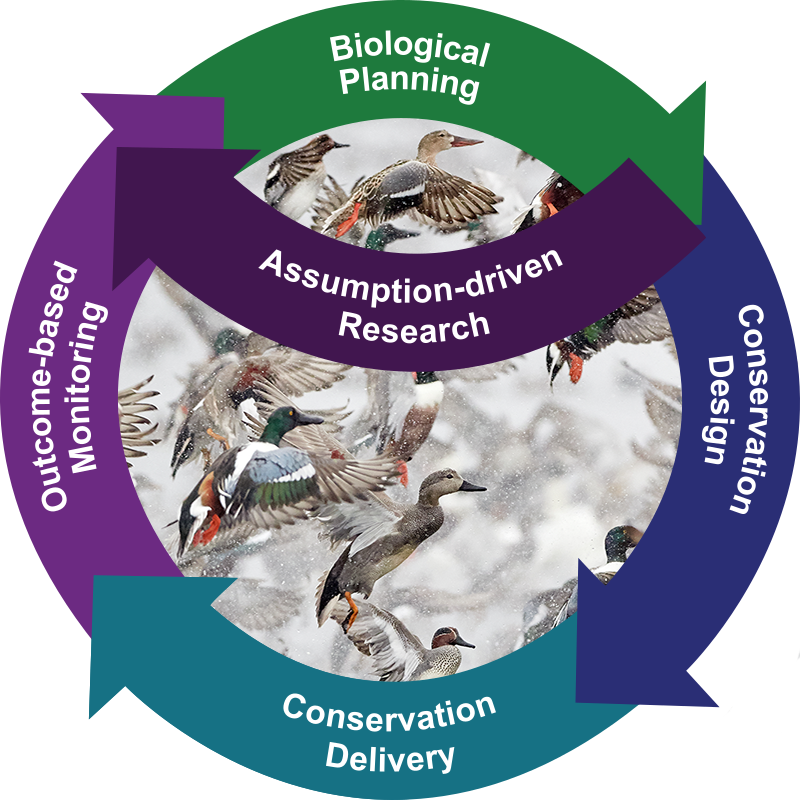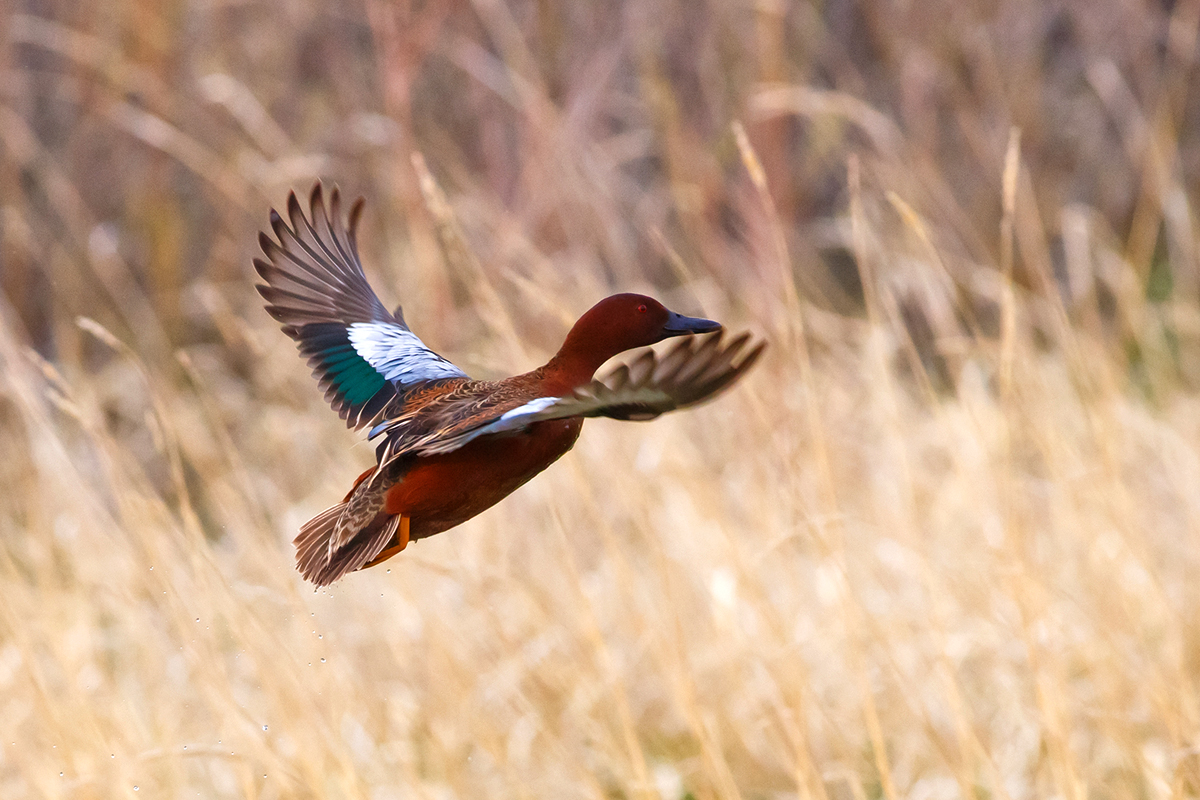Conservation Science
Chestnut-collared Longspur photo by Rick Bohn
Strategic Habitat Conservation
Innovative science and tools are developed through robust science partnerships to:
- Quantify species-habitat relationships
- Produce decision support tools for conservation programs
- Assess impacts to priority species from land-use and environmental changes across the PPR
- Evaluate the effectiveness of important conservation programs and strategies toward PPJV goals and objectives.
These science investments are central to the Strategic Habitat Conservation framework embraced by the PPJV. This framework ensures the PPJV is applying the latest and best science available to conserve the habitats that birds depend on and sustain their populations in the PPR and throughout North America.

Strategic Habitat Conservation relies on an adaptive management framework to inform decisions about where and how to deliver conservation with our partners to achieve predicted biological outcomes necessary to sustain wildlife populations.
Science Partnerships
The PPJV’s conservation achievements are rooted in a long history of collaboration with state, federal, and NGO partners committed to applied landscape-scale science in the PPR. One of the functions of the PPJV Technical Committee is to facilitate science partnerships that address the information needs of natural resource managers in the PPR, who inform important conservation programs for bird habitats.
The PPJV partnership has greatly benefited from long-standing partnerships with the USFWS Habitat and Population Evaluation Team (HAPET) and the USGS Northern Prairie Wildlife Research Center (NPWRC). These scientists provide critical science capacity to the PPJV by offering technical assistance, monitoring and evaluating progress toward PPJV goals and objectives, and developing applied science to further strengthen the science foundation of the PPJV Implementation Plan. Cooperative science efforts between HAPET, NPWRC, state wildlife agencies, NGOs, universities, and federal partners such as USDA and BLM are the hallmark of the PPJV’s ability to deliver meaningful conservation in the dynamic and rapidly changing PPR landscapes.
Conservation Science At Work

Planning Tools
Much of the PPJV’s science revolves around developing spatially explicit models of species-habitat relationships that highlight important areas to focus conservation.

Projects
The PPJV is continually working to strengthen the science foundation for bird habitat conservation.
